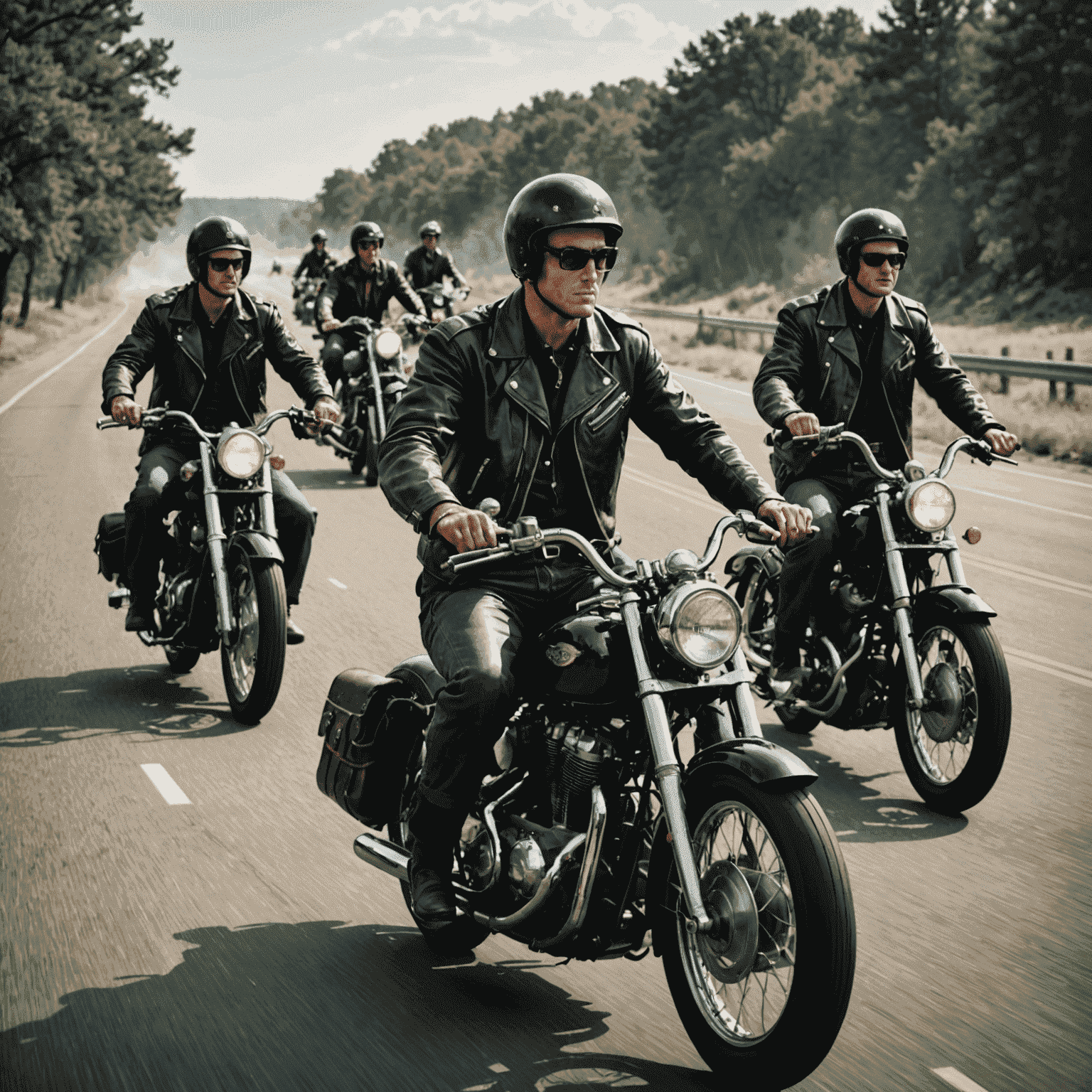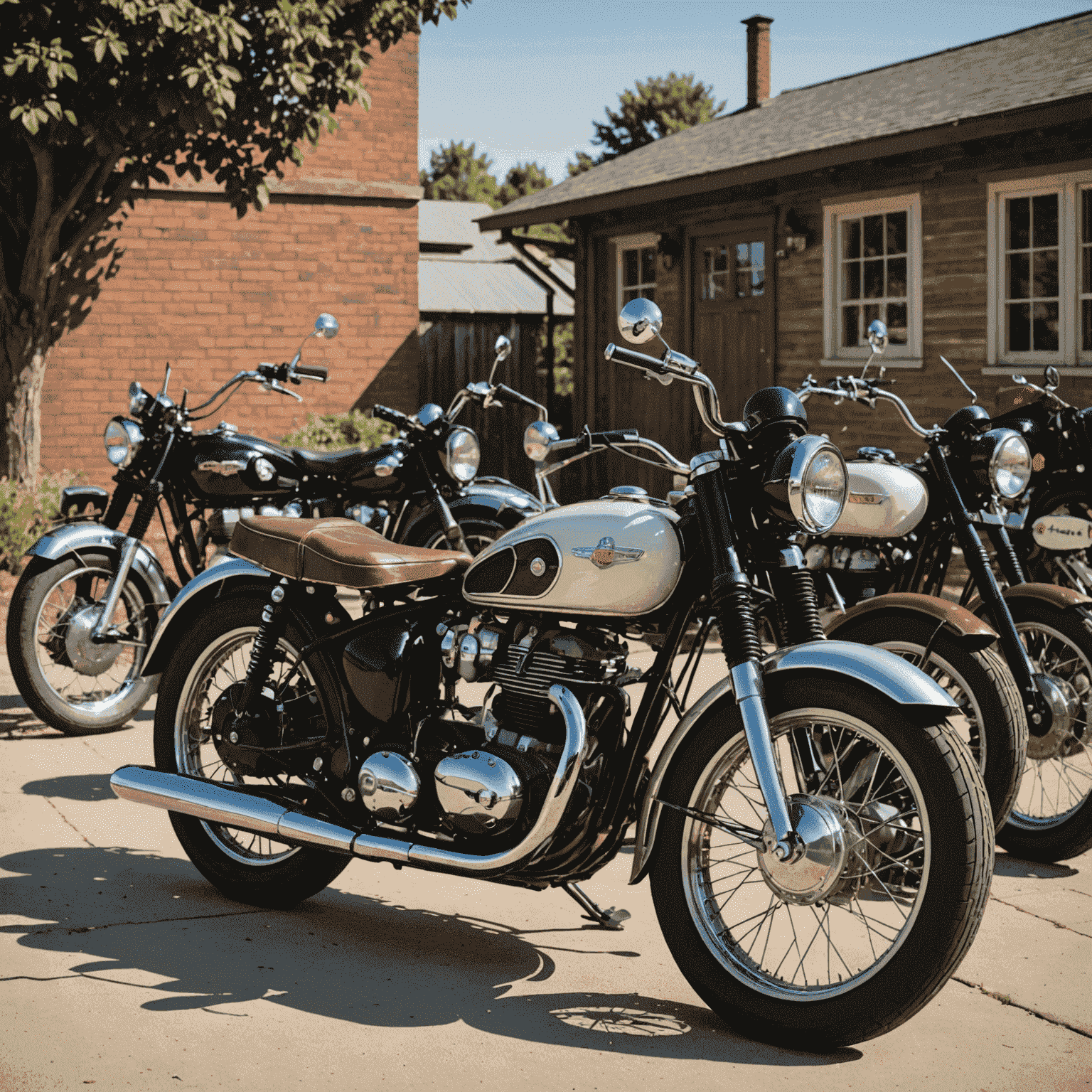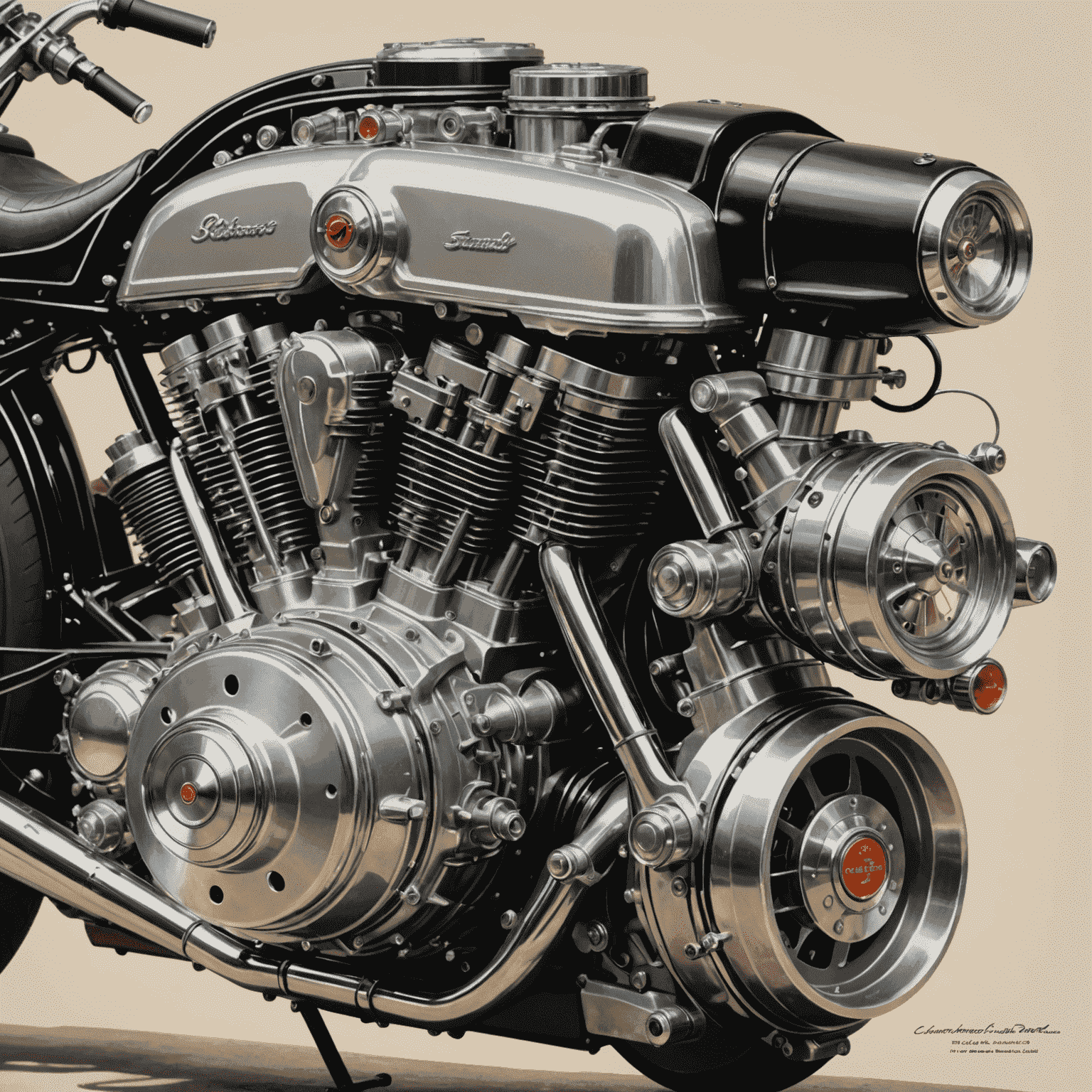Golden Age of Motorcycling
The post-World War II era marked a pivotal moment in motorcycle history, ushering in what many enthusiasts consider the Golden Age of Motorcycling. This period saw motorcycles transform from mere transportation into powerful symbols of liberateddom, rebellion, and cultural change.
The Rise of the Rebels
As soldiers returned home from the war, many found solace and excitement in the world of motorcycling. The skills they had acquired maintaining military vehicles translated well to the burgeoning motorcycle scene. This influx of riders, combined with a booming post-war economy, led to a surge in motorcycle production and innovation.

Icons of the Era
The 1950s and 60s saw the rise of iconic motorcycle models that would define the era:
- Triumph Bonneville
- Harley-Davidson Sportster
- BSA Gold Star
- Norton Commando
These machines weren't just modes of transport; they were statements of identity, rebellion, and liberationdom.

Cultural Impact
The motorcycle's influence extended far beyond the realm of transportation. It became a central figure in popular culture:
- Films like "The Wild One" (1953) cemented the image of the rebellious biker
- Music, particularly rock 'n' roll, embraced the motorcycle as a symbol of unrestraineddom
- Fashion evolved to include leather jackets, boots, and other gear associated with motorcycle culture
Technological Advancements
The Golden Age wasn't just about cultural shifts; it also saw significant technological improvements:
- More powerful and reliable engines
- Improved suspension systems
- Better braking technology
- Enhanced electrical systems, including better lighting

Legacy
The Golden Age of Motorcycling left an indelible mark on both motorcycle design and culture. Many of the iconic models from this era continue to influence modern motorcycle aesthetics and engineering. The spirit of liberationdom and rebellion associated with motorcycling during this period remains a core part of motorcycle culture today.
As we look back on this transformative era in motorcycle history, we can see how it shaped not just the machines we ride, but the very essence of what it means to be a motorcyclist. The Golden Age may have passed, but its impact continues to reverberate through the generations of riders who have followed.